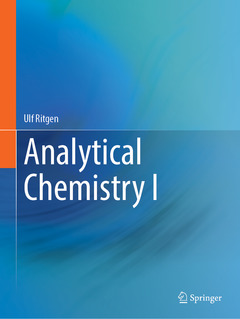Description
Analytical Chemistry I, 1st ed. 2023
Author: Ritgen Ulf
Language: English
Subject for Analytical Chemistry I:
312 p. · 21x27.9 cm · Paperback
Description
/li>Contents
/li>Biography
/li>Comment
/li>
This book is a translation of the original German 1st edition Analytische Chemie I by Ulf Ritgen, published by Springer-Verlag GmbH Germany, part of Springer Nature in 2019. The translation was done with the help of artificial intelligence (machine translation by the service DeepL.com). A subsequent human revision was done primarily in terms of content, so that the book will read stylistically differently from a conventional translation. Springer Nature works continuously to further the development of tools for the production of books and on the related technologies to support the authors.
Ulf Ritgen teaches general chemistry, analytical chemistry, inorganic chemistry and biochemistry at the Bonn-Rhein-Sieg University of Applied Sciences and the ZVA-Bildungszentrum Dormagen. He is the author of several textbooks and exercise books, including the associated second volume Analytical Chemistry II.
Designed for self-study of chemistry
Tested in a distance learning chemistry course
An introduction to analytical chemistry - comprehensible and structured
These books may interest you

Analytical Chemistry 293.64 €



